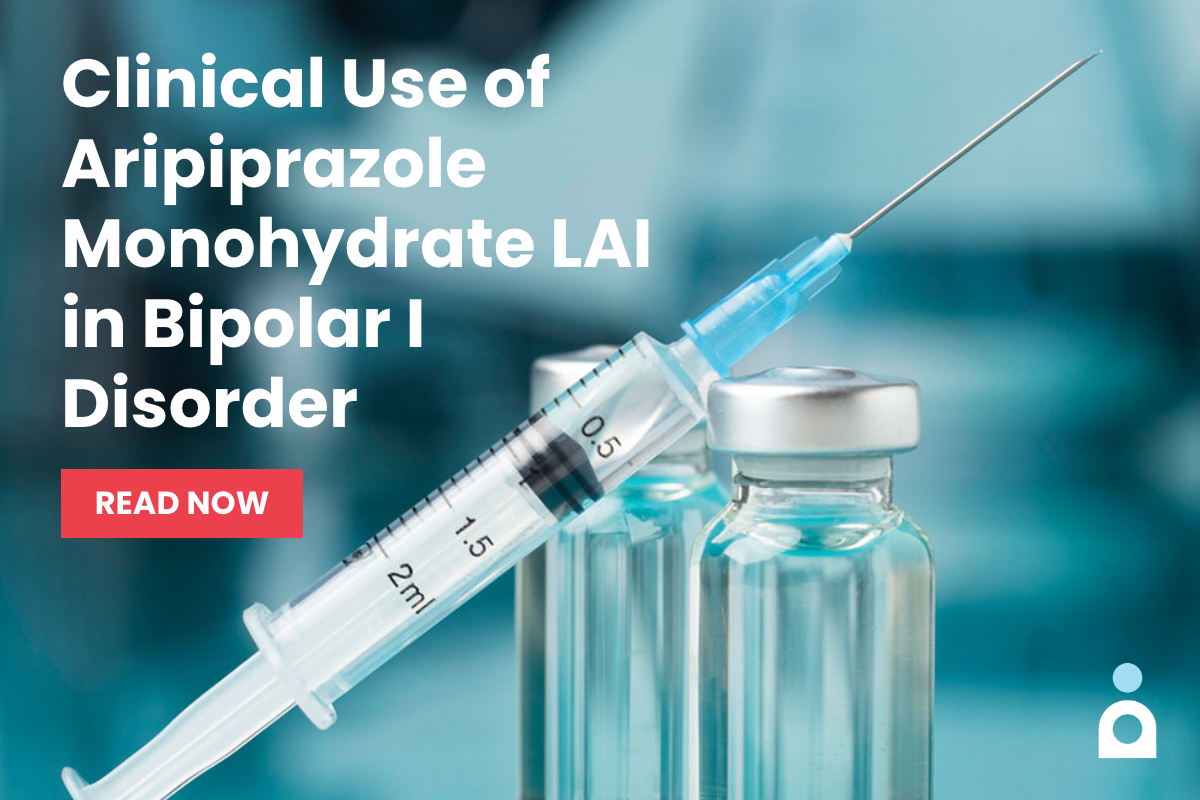Antipsychotic-Induced Euprolactinemic Galactorrhea in an Adolescent Girl: A Case Report
To the Editor: We describe a case report of galactorrhea with prolactin level within normal limits in a healthy 16-year-old African American girl after administration of quetiapine. Prolactin is an endogenous hormone from the anterior pituitary gland that promotes lactation. Dopamine predominantly inhibits prolactin. Antipsychotic medications block the dopamine-2 (D2) receptor via the tuberoinfundibular dopamine pathway, which can result in hyperprolactinemia.1 Serotonin is an indirect modulator of prolactin secretion.2 Hyperprolactinemia can cause galactorrhea, gynecomastia, sexual dysfunction, menstrual irregularities, infertility, hirsutism, and acne in women due to hypoestrogenism; hypogonadism and impaired growth and sexual maturation in adolescents; and potential osteoporosis.3,4 Women have greater prolactin elevations from antipsychotics than do men.5,6 Children and adolescents may also have greater prolactin elevations in response to antipsychotics.7 Conventional antipsychotics, risperidone, zotepine, and amisulpride are known to elevate prolactin more than other atypical antipsychotic medications.4,8-10 The median time to onset of galactorrhea is 20 days (range, 7-75 days) after commencement of an antipsychotic medication.8
Compared to typical antipsychotics with tighter D2 receptor binding, most atypical antipsychotics are less likely to cause hyperprolactinemia and thus galactorrhea. Quetiapine is known to have overall weaker dopamine binding activity; positron emission tomography scans showed transiently high striatal D2 receptor occupancy. Quetiapine’s transient association with the D2 receptor is postulated to allow normal dopaminergic neurotransmission in the tuberoinfundibular pathway and thus avoid hyperprolactinemia. This may explain only a temporary elevation of prolactin levels. D2 receptor occupancy decreases to 0%-27% in 12 hours.11 Quetiapine is less likely to elevate serum prolactin levels than risperidone.10,12
Fluoxetine also has been described to cause hyperprolactinemia and galactorrhea, possibly by stimulating prolactin release from pituitary lactotrophs.13 Hyperprolactinemia and galactorrhea from selective serotonin reuptake inhibitor use tended to correlate with above average dosages.14 Our patient was taking fluoxetine at 15 mg daily. Oral fluoxetine at 60 mg daily for 6 days increased prolactin levels in various studies.14,15
Case report. Mary, a 16-year-old African American adolescent girl, presented to the adolescent inpatient unit in 2011 for a chief complaint of “hearing voices and seeing spirits that tell her to kill herself.” As a child, she had delays in meeting her milestones in walking, talking, and toileting. She denied any substance abuse history. Her urine drug screen was negative. Her medical history was unremarkable except for previous diagnosis of schizoaffective disorder.
Mary started hearing voices at 12 years of age. Previously, the voices commanded her to hurt others. She was in the 11th grade and receiving special education for behavior issues when she lost her grandfather and started hearing voices again. This time, the voices consisted of the voice of her deceased grandfather, the voice of her aunt, and an unidentified male voice. The voices were instructing her to kill herself now. She had multiple attempts of suicide by cutting herself. Sometimes, she “blacked out” in severe distress from the voices. She reported memory lapses and recalls poor choices and actions made during such episodes.
Her medications at admission included oral fluoxetine 10 mg daily and oral ziprasidone 60 mg twice daily. After reviewing her history, symptoms, and medication trials, we decided to treat her with oral fluoxetine 15 mg daily and oral quetiapine extended release (XR) 100 mg daily. Ziprasidone was discontinued because it was not effective. She reported bilateral mastalgia, breast enlargement, and “milk discharge” from her breasts 3 days after starting quetiapine. Galactorrhea was confirmed by physical examination. She denied having headaches and vision changes. Her serum prolactin level was 19.9 ng/mL (reference range is 3.4 to 24.1 ng/mL) 6 days after starting fluoxetine and quetiapine XR. Prolactin levels > 100 ng/mL are characteristic of tumors secreting prolactin.4 We checked her serum prolactin level on 2 different occasions; findings of both serum prolactin assays were not elevated beyond a normal reference range (reference range for a 13- to 15-year-old girl is < 60 ng/mL16). Both prolactin assays were obtained in a fasting state. Quetiapine XR was discontinued at this time. Her serum prolactin level was 19.2 ng/mL 7 days after stopping quetiapine XR. It can take 3 days to 3 weeks for serum prolactin levels to normalize after stopping antipsychotic medications.4
Mary stated that her menstrual cycle was regular over the last 3 months. She did endorse vaginal discharge. The pelvic examination showed pelvic tenderness. Urinalysis confirmed elevated white blood cells and nitrites. We tested her for gonorrhea and chlamydia, and the results were negative. We treated her with doxycycline and azithromycin. Her urine culture was positive for diphtheroid bacilli. Her urine pregnancy test was negative, and her serum beta human chorionic gonadotropin test was also negative. Her thyroid-stimulating hormone and free T4 levels were within normal limits. Euprolactinemic galactorrhea has been associated with thyroid abnormalities.17 Her blood urea and creatinine levels were within normal limits. Prolactin can be high in patients with chronic renal failure.18 Gonadotropin-associated protein and acetylcholine have been identified as prolactin-inhibiting factors in animals.19
A computed tomography scan of the head, performed after hospital discharge, showed no mass lesion in the brain. Mary exhibited hostile behavior and mood alterations with other females that were problematic. These behaviors can be a clinical manifestation of hyperprolactinemia,20 but our patient had prolactin levels within normal limits. Quetiapine was discontinued, and after 2 weeks her galactorrhea resolved. Prolactin levels can be high in patients with chronic renal failure.17 Her serum prolactin level was checked again 2 weeks after discontinuation of quetiapine, and it was still within the normal range.
Drug-induced hyperprolactinemia is postulated to occur through various mechanisms. One mechanism decreases dopamine, another increases serotonin. Prolactin can be increased by various medications and mechanisms. Lithium acts on serotoninergic pathways to elevate prolactin. Estrogen potentiation of vasoactive intestinal peptide mediates hypothalamic synthesis of prolactin. Estrogen also has actions on the pituitary lactotroph cells to stimulate prolactin release. Opiates can inhibit dopamine synthesis and raise prolactin. H2 antagonists can inhibit dopamine release. Alprazolam raises prolactin levels through an unclear mechanism. Most psychotropic medications increase prolactin by inhibiting dopaminergic pathways.2,4 Thyrotropin-releasing hormone promotes prolactin release.21
There is a trend to apply atypical antipsychotics to treat a broad spectrum of psychiatric diseases. Quetiapine has a lower affinity for dopamine D2 receptors and appears to be selective for mesolimbic and mesocortical dopamine receptors, with relative sparing of the tuberoinfundibular system.22 Quetiapine has also been used to correct olanzapine-induced galactorrhea.23 However, there is a case report documenting dose-dependent quetiapine-induced galactorrhea.24 Female adolescents are more vulnerable to the side effect of galactorrhea caused by antipsychotic medications. In this case, typical and atypical antipsychotic medications most likely contributed to the galactorrhea, although fluoxetine may have contributed as well. Our patient had a serum prolactin level within normal limits despite the galactorrhea. Our patient was reluctant to reveal that she had galactorrhea; clinicians should screen female adolescents for galactorrhea when prescribing psychotropic medications and administer atypical antipsychotics cautiously.
References
1. Petty RG. Prolactin and antipsychotic medications: mechanism of action. Schizophr Res. 1999;35(suppl 1):S67-S73. PubMed doi:10.1016/S0920-9964(98)00158-3
2. Madhusoodanan S, Parida S, Jimenez C. Hyperprolactinemia associated with psychotropics—a review. Hum Psychopharmacol. 2010;25(4):281-297. PubMed doi:10.1002/hup.1116
3. Pappagallo M, Silva R. The effect of atypical antipsychotic agents on prolactin levels in children and adolescents. J Child Adolesc Psychopharmacol. 2004;14(3):359-371. PubMed doi:10.1089/cap.2004.14.359
4. Haddad PM, Wieck A. Antipsychotic-induced hyperprolactinaemia: mechanisms, clinical features and management. Drugs. 2004;64(20):2291-2314. PubMed doi:10.2165/00003495-200464200-00003 PubMed doi:10.1159/000119265
5. Wode-Helgodt B, Eneroth P, Fyrö B, et al. Effect of chlorpromazine treatment on prolactin levels in cerebrospinal fluid and plasma of psychotic patients. Acta Psychiatr Scand. 1977;56(4):280-293. PubMed doi:10.1111/j.1600-0447.1977.tb00229.x
6. Kuruvilla A, Peedicayil J, Srikrishna G, et al. A study of serum prolactin levels in schizophrenia: comparison of males and females. Clin Exp Pharmacol Physiol. 1992;19(9):603-606. PubMed doi:10.1111/j.1440-1681.1992.tb00511.x
7. Wudarsky M, Nicolson R, Hamburger SD, et al. Elevated prolactin in pediatric patients on typical and atypical antipsychotics. J Child Adolesc Psychopharmacol. 1999;9(4):239-245. PubMed doi:10.1089/cap.1999.9.239
8. Windgassen K, Wesselmann U, Schulze Mönking H. Galactorrhea and hyperprolactinemia in schizophrenic patients on neuroleptics: frequency and etiology. Neuropsychobiology. 1996;33(3):142-146.
9. Kleinberg DL, Davis JM, de Coster R, et al. Prolactin levels and adverse events in patients treated with risperidone. J Clin Psychopharmacol. 1999;19(1):57-61. PubMed doi:10.1097/00004714-199902000-00011
10. Komossa K, Rummel-Kluge C, Schwarz S, et al. Risperidone versus other atypical antipsychotics for schizophrenia. Cochrane Database Syst Rev. 2011;1(1):CD006626. PubMed
11. Kapur S, Zipursky R, Jones C, et al. A positron emission tomography study of quetiapine in schizophrenia: a preliminary finding of an antipsychotic effect with only transiently high dopamine D2 receptor occupancy. Arch Gen Psychiatry. 2000;57(6):553-559. PubMed doi:10.1001/archpsyc.57.6.553
12. Swadi HS, Craig BJ, Pirwani NZ, et al. A trial of quetiapine compared with risperidone in the treatment of first onset psychosis among 15- to 18-year-old adolescents. Int Clin Psychopharmacol. 2010;25(1):1-6. PubMed doi:10.1097/YIC.0b013e3283320511
13. Peterson MC. Reversible galactorrhea and prolactin elevation related to fluoxetine use. Mayo Clin Proc. 2001;76(2):215-216. PubMed doi:10.4065/76.2.215
14. Spigset O. Adverse reactions of selective serotonin reuptake inhibitors: reports from a spontaneous reporting system. Drug Saf. 1999;20(3):277-287. PubMed doi:10.2165/00002018-199920030-00007
15. Urban RJ, Veldhuis JD. A selective serotonin reuptake inhibitor, fluoxetine hydrochloride, modulates the pulsatile release of prolactin in postmenopausal women. Am J Obstet Gynecol. 1991;164(1, pt 1):147-152. PubMed
16. Henderson DC, Doraiswamy PM. Prolactin-related and metabolic adverse effects of atypical antipsychotic agents. J Clin Psychiatry. 2008;69(suppl 1):32-44. PubMed
17. Ataya KM, Subramanian MG, Lawson DM, et al. Euprolactinemic galactorrhea: response of bioassayable prolactin to thyrotropin-releasing hormone. J Reprod Med. 1996;41(3):156-160. PubMed
18. Sievertsen GD, Lim VS, Nakawatase C, et al. Metabolic clearance and secretion rates of human prolactin in normal subjects and in patients with chronic renal failure. J Clin Endocrinol Metab. 1980;50(5):846-852. PubMed doi:10.1210/jcem-50-5-846
19. Freeman ME, Kanyicska B, Lerant A, et al. Prolactin: structure, function, and regulation of secretion. Physiol Rev. 2000;80(4):1523-1631. PubMed
20. Fava M, Fava GA, Kellner R, et al. Psychosomatic aspects of hyperprolactinemia. Psychother Psychosom. 1983;40(1-4):257-262. PubMed doi:10.1159/000287773
21. Jackson IM. Thyrotropin-releasing hormone. N Engl J Med. 1982;306(3):145-155. PubMed doi:10.1056/NEJM198201213060305
22. Goldstein JM. Quetiapine fumarate (Seroquel): a new atypical antipsychotic. Drugs Today (Barc). 1999;35(3):193-210. PubMed
23 Kingsbury SJ, Castelo C, Abulseoud O. Quetiapine for olanzapine-induced galactorrhea. Am J Psychiatry. 2002;159(6):1061. PubMed
24. Sethi S, Sharma M, Malik A. Dose-dependent galactorrhea with quetiapine. Indian J Psychiatry. 2010;52(4):371-372. PubMed doi:10.4103/0019-5545.74315
Author affiliations: Department of Psychiatry, University of South Alabama, Mobile.
Potential conflicts of interest: None reported.
Funding/support: None reported.
Published online: February 2, 2012.
Prim Care Companion CNS Disord 2012:14(1):doi:10.4088/PCC.11l01239
© Copyright 2012 Physicians Postgraduate Press, Inc.


